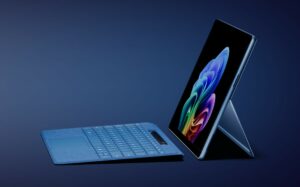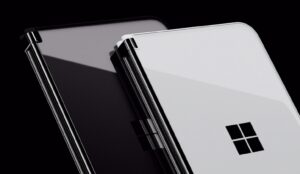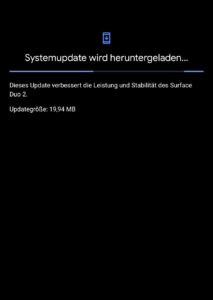Nur wenige Wochen nach Patch Dienstag im August, hat Microsoft kumulative Updates für die unterstützten Versionen von Windows 10 herausgebracht. Das aktuell verteilte Update ist für Windows 10 Nutzer mit den Versionen 1803 (April Update 2018 KB4346783), 1709 (Fall Creators Update KB4343893), 1703 (Creators Update KB4343889) und 1607 (Anniversary Update KB4343884) verfügbar.
Für Nutzer, die das Windows 10 April Update 2018 (1803) Verwenden, wird KB4346783 von Microsoft ausgerollt und die Build-Nummer erhöht sich auf 17134.254.
Änderungen in KB4346783 für Windows 10 1803:
- Addresses an issue in Microsoft Foundation Class applications that may cause applications to flicker.
- Addresses an issue where touch and mouse events were handled differently in Windows Presentation Foundation (WPF) applications that have a transparent overlay window.
- Addresses a reliability issue in applications that have extensive window nesting.
- Addresses an issue in the Universal CRT that sometimes causes the AMD64 FMOD to return an incorrect result when given very large inputs.
- Addresses an issue in the Universal CRT that causes the _get_pgmptr() function to return an empty string.
- Addresses an issue in the Universal CRT that causes isprint() to return TRUE for a tab when using the C locale.
- Addresses an issue where Microsoft Edge or other UWP applications can't perform client authentication when the private key is stored on a TPM 2.0 device.
- Addresses an issue that causes computer certificate enrollment or renewal to fail with an "Access denied" error after installing the April 2018 update. This issue occurs when the registry process has a lower process ID (PID) than all other processes except SYSTEM.
- Addresses an issue that, in some cases, failed to clear decrypted data from memory after a CAPI decryption operation was completed.
- Addresses an issue that prevented the Device Guard PackageInspector.exe application from including all the files needed for an application to run correctly once the Code Integrity policy was completed.
- Addresses an issue where not all network printers are connected after a user signs in. The HKEY_USERS\User\Printers\Connections key shows the correct network printers for the affected user; however, the missing list for network printers from this registry key isn't populated in any app, including Microsoft Notepad, or in Devices and Printers. Printers may disappear or stop functioning.
- Addresses an issue that prevents printing on a 64-bit OS when 32-bit applications impersonate other users (typically by calling LogonUser). This issue occurs after installing monthly updates starting with KB4034681, released in August 2017. To resolve the issue for the affected applications, install this update, and then do one of the following:
- Use Microsoft Application Compatibility Toolkit to globally enable the Splwow64Compat App Compat Shim
- Use the following registry setting, and then restart the 32-bit application: HKEY_LOCAL_MACHINE\System\CurrentControlSet\Control\Print Setting: Splwow64Compat
Type: DWORD
Value1: 1
- Addresses an issue that causes the Wi-Fi EAP-TTLS (CHAP) authentication to fail if a user saves credential information before authentication.
- Addresses an issue that causes devices that have 802.1x Extensible Authentication Protocol (EAP) enabled to randomly stop working with the stop code ”0xD1 DRIVER_IRQL_NOT_LESS_OR_EQUAL”. The issue occurs when the kernel memory pool becomes corrupted. Crashes will generally occur in nwifi.sys.
- Addresses an issue that may remove a Dynamic Host Configuration Protocol (DHCP) option from a reservation after changing the DHCP scope settings.
- Extends the Key Management Service (KMS) to support the upcoming Windows 10 client Enterprise LTSC and Windows Server editions. For more information, see KB4347075.
Wenn Ihr noch das Fall Creators Update von Windows 10 1709 verwendet erhaltet Ihr KB4343893 und eure Build-Nummer erhöht sich auf 16299.637.
Änderungen in KB4343893 für Windows 10 1709:
- Addresses an issue in Microsoft Foundation Class (MFC) applications that may cause applications to flicker.
- Addresses an issue that causes win32kfull.sys to stop working (Stop 3B) when cancelling journal hook operations or disconnecting a remote session.
- Addresses an issue that caused users to press Ctrl+Alt+Delete twice to exit assigned access mode when autologon was enabled.
- Addresses an issue that prevented the Device Guard PackageInspector.exe application from including all the files needed for an application to run correctly once the Code Integrity policy was completed.
- Addresses an issue that prevents users of PIV/CAC smart cards from authenticating to use enterprise resources or prevents Windows Hello for Business from configuring on first logon.
- Addresses an issue that causes Microsoft Edge to stop working after setting a DLL rule in AppLocker.
- Addresses an issue that, in some cases, failed to clear decrypted data from memory after a CAPI decryption operation was completed.
- Addresses an issue that causes the Wi-Fi EAP-TTLS (CHAP) authentication to fail if a user saves credential information before authentication.
- Addresses an issue that causes high CPU usage on machines with built-in Sierra broadband modules when switching from WLAN to LAN. The WWanSvc service continually claims additional memory until the machine becomes unresponsive and a black screen appears.
- Addresses an issue that prevents a checkpoint created on a Windows Server 2016 cluster from being reapplied. This occurs when VMs are running on a cluster-shared volume (CSV), and the error is “Failed to read from stream. HRESULT = 0xC00CEE3A.”
- Addresses an issue that prevents Folder Redirection from updating the server UNC path when the path changes because of a change to an environment variable (%HOMESHARE% or %USERNAME%). To prevent this problem, set the Folder Redirection policy to not move the data when the path changes.
- Addresses an issue that requires a password to be input twice if you connect to a locked device using Remote Desktop Connect.
- Addresses an issue that causes devices that have 802.1x Extensible Authentication Protocol (EAP) enabled to randomly stop working with the stop code ”0xD1 DRIVER_IRQL_NOT_LESS_OR_EQUAL”. The issue occurs when the kernel memory pool becomes corrupted. Crashes will generally occur in nwifi.sys.
- Provides a stability resolution for native Peripheral Component Interconnect Express (PCIe) enumeration and the runtime D3 (RTD3) state.
- Addresses an issue that may remove a Dynamic Host Configuration Protocol (DHCP) option from a reservation after changing the DHCP scope settings.
- Addresses an issue that may prevent the Start menu from opening after refreshing your PC.
- Extends the Key Management Service (KMS) to support the upcoming Windows 10 client Enterprise LTSC and Windows Server editions. For more information, see KB4347075.







